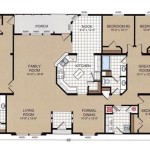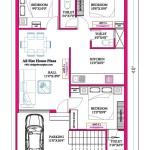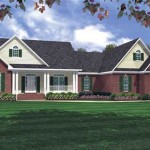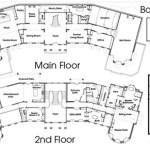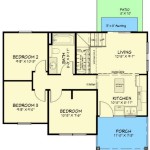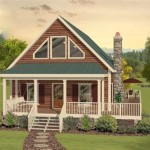Exploring the Advantages and Design Considerations of Tri-Level Home Floor Plans
Tri-level homes, also known as split-level homes, offer a unique blend of functionality and style. These homes, characterized by their distinct three-level layout, provide a distinct living experience that caters to various needs and preferences. This article delves into the advantages of tri-level home floor plans, examines crucial design considerations, and explores the diverse styles and layouts that can be incorporated.
Advantages of Tri-Level Homes
Tri-level homes offer several advantages that make them desirable for families and individuals alike. One of the most prominent benefits is their efficient use of space. The staggered levels create distinct zones for different activities, maximizing the functionality of the living area. For instance, the lower level can accommodate a family room, home office, or guest bedroom, while the upper level can host bedrooms and a master suite. This separation of space fosters a sense of privacy and allows for greater flexibility in how each level is utilized.
Another advantage of tri-level homes is their potential for beautiful and interesting architectural designs. The staggered levels allow for varied rooflines, windows, and exterior features, resulting in a visually appealing and distinctive dwelling. The unique design also adds to the home's curb appeal, creating a memorable and inviting presence within the neighborhood.
Tri-level homes often provide a greater sense of connection with the outdoors. The staggered levels naturally create opportunities for decks, balconies, or patios, providing picturesque spaces for relaxation and entertainment. These outdoor areas enhance the home's living space, fostering a seamless flow between indoor and outdoor living.
Design Considerations for Tri-Level Homes
While tri-level homes offer numerous benefits, careful planning and design considerations are crucial to maximizing their potential. One key aspect is the layout of the stairs. The location and design of the stairs impact the flow of traffic between levels, influencing the home's usability and convenience. Adequate stairwell width and the incorporation of handrails are essential for safety and accessibility.
Another important consideration is the allocation of living space. The layout should ensure that each level is designed for optimal functionality and comfort. For instance, the lower level might be ideal for a family room or entertainment area, while the middle level can accommodate the kitchen, dining room, and living room, creating a central hub for daily living. The upper level may be dedicated to bedrooms and a master suite, offering a private and secluded space for relaxation and sleep.
Light and ventilation are vital elements in tri-level home design. The unique layout can sometimes pose challenges in maximizing natural light. Strategic placement of windows, skylights, and well-designed lighting fixtures can effectively bring in natural light and ensure adequate illumination throughout the home.
Styles and Layouts of Tri-Level Homes
Tri-level homes can be incorporated into various architectural styles, each offering a unique aesthetic and design approach. Modern tri-level homes often feature clean lines, minimalist designs, and large expanses of glass, emphasizing open spaces and a connection with the outdoors. Contemporary tri-level homes, on the other hand, embrace innovative materials, geometric shapes, and bold color palettes.
Traditional tri-level homes often incorporate classic architectural elements like dormers, gables, and exposed beams, creating a timeless and charming appeal. Ranch-style tri-level homes often combine the low profile of a ranch with the staggered levels of a tri-level, offering a comfortable and practical living experience. Finally, Mediterranean tri-level homes typically feature stucco exteriors, terracotta roofs, and arched entryways, bringing a touch of European flair to the design.
The layout of a tri-level home can vary based on individual needs and preferences. Some common layout configurations include the "split-entry" layout, where the entry level is positioned between the upper and lower levels, offering convenient access to all three floors. Another common layout is the "walk-out" layout, where the lower level has direct access to the outdoors, creating a seamless transition between the home's interior and exterior spaces.

Colonial Tri Level Vintage House Plans

Beautiful Tri Level House Plans 8 1970s Home Split Floor
Engine Company Search Tri Level House Fire Engineering Training Community

Tri Level Narrow Lot Plan 69373am Architectural Designs House Plans
Split Level Homes Designs G J Gardner

Familyhomeplans Com Plan Number 45253 Order Code 01web Split Level House Plans Modular Home Floor

Split Level House Plans And Foyer Floor

Modern Split Level House Plans And Multi Floor Plan Designs

Plan 59510nd Open Floor Three Bedroom Design Plans Ranch Split Level House

4 Bedroom Split Level House Plan 2136 Sq Ft 2 Bathroom



